Why an Overclockable Core i3 Might Not Exist: The Supermicro C7H170-M and Intel Core i3-6100TE Review
by Ian Cutress on March 17, 2016 10:30 AM EST- Posted in
- CPUs
- Intel
- Motherboards
- Core i3
- Supermicro
- Overclocking
Supermicro C7H170-M Software
Historically outside of the big four motherboard manufacturers mentioning a software package usually throws up some horror stories or completely blank looks. I have had manufacturers provide just the basic drivers on disk before, or that plus a basic tool with a poor GUI that ends up crashing when you select a few options. I set aside my predispositions, as with every review, and was looking forward to Supermicro’s software attempts, especially given our previous discussions about how interested they are in the consumer market. In our meetings together back at Computex I laid out the fact that their competitors have many years of experience in this, so it may take some time to match their quality. In a surprising twist, it seems that Supermicro has fallen onto their historic experience and gone not so much with a software GUI, but a web interface for their analysis tools. They call it Super Doctor 5.
I should explain. Supermicro, as a server company, has for many years dealt with management chips (such as Aspeed variants) that allow users to access some system controls and monitoring tools via a web interface even when the system is powered but not turned on. Having created their own IMPI interfaces for these management chips for a number of years, these tools were turned to the consumer crowd. Typically a consumer motherboard will not have a management chip, so this is more just an interface for the user to see the current status or adjust some minor aspects to the system.
As shown in the graph above, after an initial install, we get the standard motherboard monitoring metrics: fan speed, voltages and temperatures. There is the motherboard name listed, but we don’t have a series of the usual information I would want: CPU installed, CPU frequency, memory installed, memory speed, storage devices attached, boot order, fan speeds, and/or perhaps even a picture of the motherboard in use. There are a lot of things possible, but this is a basic list I would expect.
Perhaps unsurprisingly then, all the information I want is in the System Info tab along the top. The interface is easy to use, for sure: a summary with separate options on the left, with the results on the right. The problem for me is that the interface is lifeless – there’s no user experience here. A user in 2016 normally requests a tailored and styled experience, but here there is none to speak of.
Some of the sub menus, like this Disk Drive one, is more along the lines of what looks good, although the decision for width being at 100% makes everything look stretched.
The configuration tab links in with the hardware monitoring to give a series of alerts should the system get too hot or something fail and voltages drop. A user can set up an SMTP email server which can be used to send an email when it happens – a standard thing in the server industry, but you rarely see it in the consumer part because if the system gets a low voltage point, it is more likely to shut off rather than have something always-on to send an email. There is also an option here for users to flash the BIOS.
The monitoring tab shows the boundaries for each of the components the user can monitor, and makes them adjustable via text boxes.
One interesting addition is this tab on power control, to turn the system off. Again, this is more of a server feature – log in through the management chip in order to restart a system that isn’t responding. There isn’t much demand for this in a management chip-less consumer based system.
Overall, Supermicro’s software package is interesting, if a bit light. Typically for a consumer product we get full fan controls, or if overclocking is enabled, the ability to adjust base frequency and voltages on the fly. There’s also the lack of added software features, which we see on other vendors, such as audio packages or gaming focused software which Supermicro doesn’t have (macros, sniper features, network management).


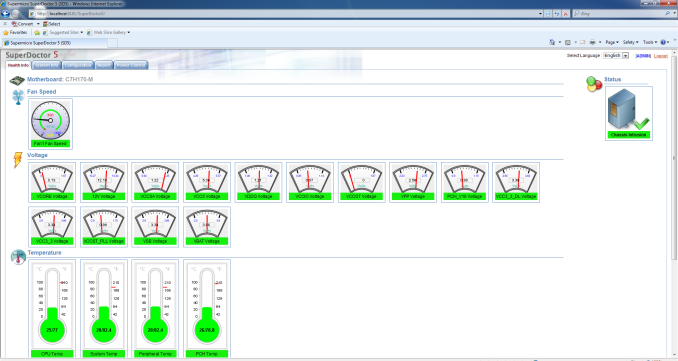

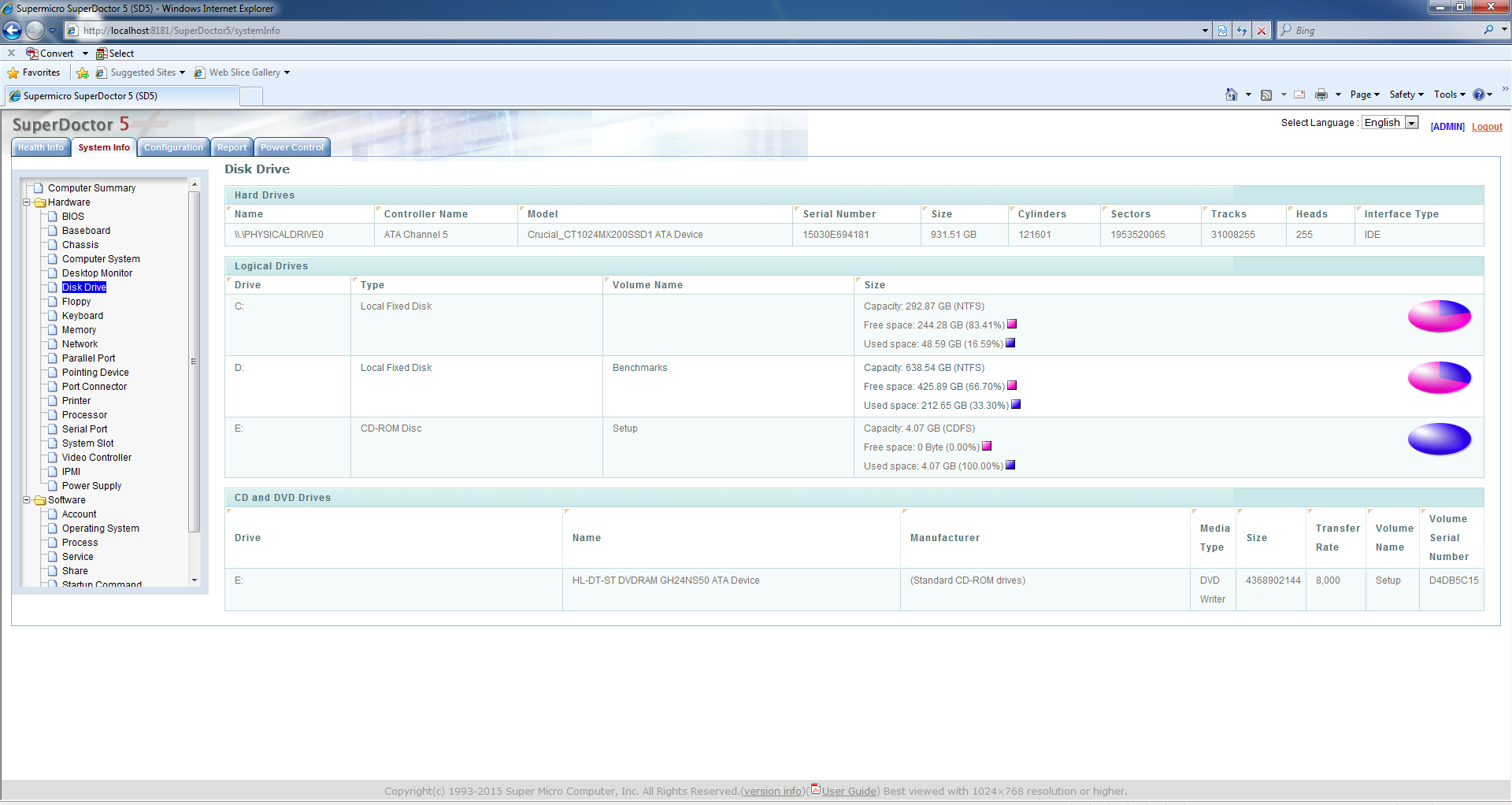
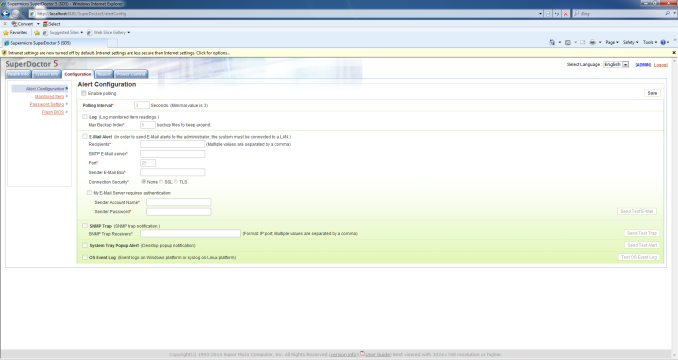
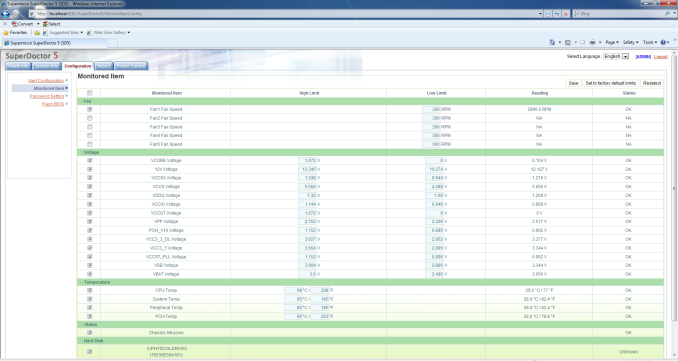
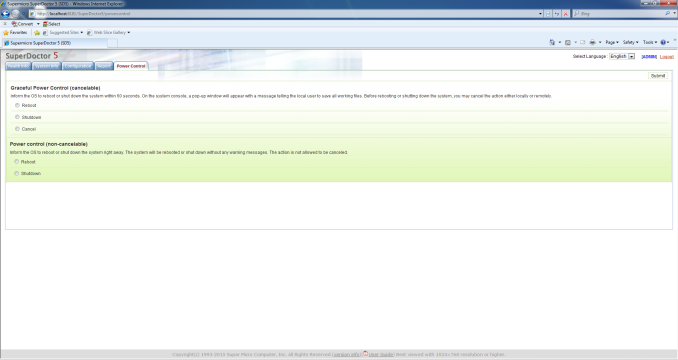
 - First Run_thumb.png)
 - Health_thumb.png)
 - H2_thumb.png)
 - System Info_thumb.png)
 - HDD Info_thumb.png)
 - Config_thumb.png)








62 Comments
View All Comments
nathanddrews - Thursday, March 17, 2016 - link
Predicating the value of i3 overclocking as a whole on the 6100TE is absurd, don't you think? The 35% OC of the 6100TE is still slower than the base clock speed of the vanilla 6100 (3.7GHz), which when OCed over 4.2GHz offers a tremendous value. For the same price - why on earth would you buy the much slower 35W variant if your goal is overclocking?http://ark.intel.com/compare/90729,88181
From the standpoint of motherboard/BIOS SKYOC availability alone I would agree that the case is now somewhat moot, but I think the case that has already been made months ago by DigitalFoundry and others is that the SKYOC i3 (normal i3 CPUs that you can buy) makes a very strong value. It's a shame that mobo vendors caved so quickly.
dualsmp - Thursday, March 17, 2016 - link
I suspect politics is a work here. Also, the conclusion would be more clear cut with the 6100 rather than a bit nebulous with the 6100TE.Remember how fast Intel shutdown overclocking after the Clarkdale i3? When the Clarkdale i3 was overclocked it was nipping at the heels of Intel's more expensive parts at the time. The Clarkdale i3 offered too much value for the money when overclocked, so Intel had to shut it down.
ImSpartacus - Thursday, March 17, 2016 - link
You're probably right about the politics. It's a shame, but Anandtech is probably under Intel's finger.alistair.brogan - Thursday, March 17, 2016 - link
Is there hope for an AMD Zen dual core that will overclock? That's all I'd recommend for people :)ImSpartacus - Friday, March 18, 2016 - link
If zen is only 40% better ipc than excavator, then it won't be leading Intel and amd will still need high clocks compete. So I would bet that the stock zen parts might be using up a fair bit of that overclocking headroom.alistair.brogan - Thursday, March 17, 2016 - link
I think a properly overclockable i3 would hit 4.5ghz, just like an i5 can, so imagine the results in that case. It wouldn't "maybe" be worth it, it would absolutely by awesome. Which is why Intel doesn't allow it..... don't want people buying 4.5ghz i3's and saying good bye to the expensive i5sdragosmp - Thursday, March 17, 2016 - link
Thanks for the review, it's a good reference point.I thought at some point the lowest end Xeon v5 (4C/8T) was quite a bit cheaper than the 6700K and much more available. If that could be OCed, and I think some motherboards like Gigabyte's Cxxx say they could, that would have been the fastest CPU while keeping some money in the pocket.
Agreed with getting older and putting a higher value on our time, but if my kid decides to leave me alone for a while I still like to tinker with OCing
Samus - Friday, March 18, 2016 - link
It's true Xeon's are usually priced between the i-series and i-series k equivalents (there are i5 and i7 based Xeon's) so it would be cheaper than a "k" part while giving you ECC and full vPro support, not to mention Xeon's appear to have soldered heatspreaders when starting with Ivy Bridge, everything but Xeon's were shipped with pretty subpar TIM/paste. That only slightly improved with Devils Canyon...they still weren't fused lid-to-die like a Xeon.There are a few theories why Intel uses solder on Xeon CPU's. One is obviously temperature and 24/7 consistency. The most plausible reason, though, is the weight and pressure of server cooling solutions (compared to most OEM PC coolers and water blocks. I weighed a tiny 1U Xeon cooler once. This thing was like 20mm tall, and it still weighed 870 grams. That's 2 lbs! Pure block of copper fins. Tightened down to 25Nm and exposed to the pressure, vibration and temperatures of a 1U environment for years, you can take a guess why Intel makes the Xeon lids more durable.
extide - Thursday, March 17, 2016 - link
Please do that future piece, anyone who is seriously considering doing this will definitely not be sing the T or TE series chips, and as you mentioned you can't even really get them in the retail market. I would really like to see what a 4.4-4.6Ghz i3 can do.LostWander - Thursday, March 17, 2016 - link
The idea is to show how close to i5 performance you can get while paying the price of an i3. Although it would be interesting to see how well the i5 overclocks too so we can see how close to K performance we can get for a non-k price.